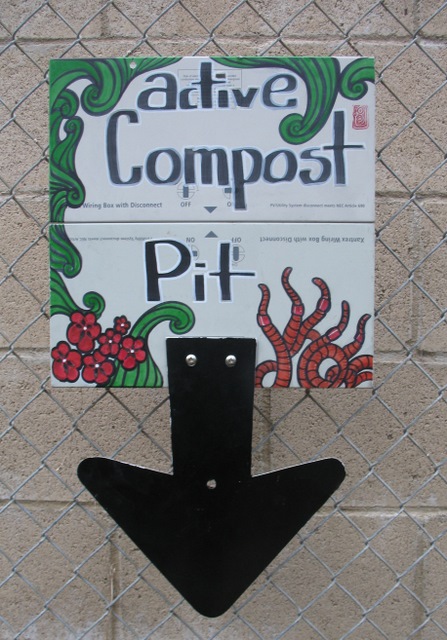The Eco-Village has experimented with several ways to turn the community’s kitchen scraps and coffee grounds into plant food. We’ve tried barrel-type composters one turns by hand and various other plastic containers made for the purpose. They all basically became mouse homes due to lack of maintenance.
Our current solution, one that is working very well, consists of a large hole dug out of the ground. Compostable materials are thrown in, layers of dirt applied until the hole is filled. Then another is dug. The earth is becoming ever more dark and rich and is frequently sown with vegetable seeds to become food and more kitchen scraps for the compost pit.
The compost pits are located in the back of the courtyard and they are rotated. Once one of them is full the one to the left is dug out. There are about 6 compost pits. It takes between 3 weeks and a month to fill one pit so the rotation allows for every pit to “compost” at least 5 or 6 months. The composted soil is harvested and added to other locations, pots or containers.
There is one person that attends the compost pits. Attending them implies checking at night that all the foods scraps are covered or well mixed with soil to avoid mice or rats, digging new pits and covering the filled pits with rocks or mulch to avoid scavengers or cats disturbing the pit, and adding mulch or dried leafs occasionally to make the compost more fluffy.
The compost pit technique requires the lowest amount of effort for composting large amounts of food scraps. At the L.A Eco-Village at least 15 households contribute to the compost pits. A few Eco-Villagers are also dedicated to VermiComposting.
The sign below marks the compost pit being used at the moment:


